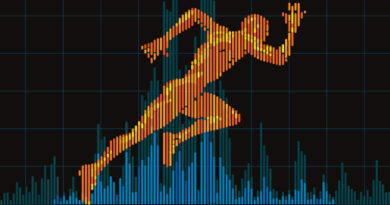Radian: U.S. Home Prices Rise During First Six Months Of Pandemic
Home prices across the United States continued to climb in August, rising at an annualized 8.6 percent from the prior month, the second highest month-over-month rate of 2020, according to Radian Home Price Index (HPI) data released by Red Bell Real Estate, LLC, a Radian Group Inc. company (NYSE: RDN). The Radian HPI is a comprehensive and timely measure of U.S. housing market prices and conditions.
The Radian HPI has risen at an annualized rate of 6.9 percent over the last six months (February 2020 to August 2020), which was slightly higher than the increase of 6.3 percent recorded during the six-month period ending in July. These annualized increases represent the continuation of the general upward trend in home price gains. The Radian HPI is calculated based on the estimated values of more than 70 million unique addresses each month, covering all single-family property types and geographies.
“Concerns of broad-based home price collapse as a result of COVID-19 have been overshadowed by the realities of changing borrower demands for housing, temporary government intervention, low mortgage rates and a substantial shortage of supply, resulting in strong appreciation in most parts of the country,” noted Steve Gaenzler, SVP of Data and Analytics. Gaenzler added that “six months into the official U.S. pandemic, the median estimated home prices have actually risen more than 3.4 percent, or 6.9 percent when annualized, providing a completely unexpected boon for homeowners.”
NATIONAL DATA AND TRENDS
- Median estimated home price in the U.S. rose to $260,062
- Lower priced homes appreciating faster than those in middle, or higher priced tiers
Nationally, the median estimated price for single-family and condominium homes rose to $260,062. Since the onset of the U.S. pandemic six months ago, homes across the U.S. rose 6.9 percent, a slight decrease from the 7.4 percent rise in the prior six-month period ending in March 2020.
The slight deceleration was due, in part, to changes in the ability and desire to transact real estate. Property sales in the first three months of the year outpaced the same period of 2019 by nearly 10 percent. However, pandemic lock downs drastically hindered sales in the second quarter causing an elimination of this outperformance and leaving the count of total sales through June to fall 6.3 percent below the total from a year prior. Moving toward the end of the third quarter, total sales counts in 2020 are running just 2.0 percent below 2019’s pace and, based on current trends, it is anticipated that 2020 totals will surpass 2019 totals before year end; an impressive performance given the headwinds.
Nationally, home price appreciation for lower priced homes remains higher than those of higher priced homes. Homes priced below $150,000 appreciated over the last year at around 7.5 percent while the middle tier (150k-500k) and upper tier (>500k) increased by approximately 4.5 percent and 3.0 percent, respectively.
REGIONAL DATA AND TRENDS
- All Regions continue to grow
- Northeast accelerates in August while other Regions decelerate
In August, all six of our Regional indices recorded positive annual home price appreciation rates. While home price appreciation slowed in five regions, the Northeast appreciated to its strongest annual gain of 2020.
Months of Supply, which represents the current month’s active listings and under contract listings divided by last month’s sales, is 3.55 months. This was down from 4.28 months in June of last year, and also represented a decrease from May. In general, tight supply continues to support pricing power for sellers. The average length of time a property actively listed has been on the market set another record low in August at 116 days, while the average length of time properties that sold in the month of August were listed prior to sale was also near an all-time low at 100 days.
METROPOLITAN AREA DATA AND TRENDS
- Most large cities had slow appreciation in August
- Large cities appreciating at a faster rate than before the pandemic
Among the 20-largest metro areas of the U.S, all recorded positive annual price appreciation in August; however, only three (Phoenix, Miami, Boston) increased their annual appreciation rates. The remaining 17 cities all slowed slightly. Some data indicate that larger cities, where high density housing is more prevalent, are witnessing a renewed interest in moving out of cities into less dense areas, which is a benefit for the single family, owner-occupied suburban areas of these metros.
Since the start of the pandemic six months ago, all but three of the largest metro areas are now growing at a faster rate than in the six months prior. The three laggards, New York, Baltimore and Washington D.C., while still showing positive home price appreciation, are growing slower than their pre-pandemic levels. The strongest included Minneapolis, St. Louis and Detroit, all with greater than 8 percent annualized home price appreciation since the start of March.

The Place for Lending Visionaries and Thought Leaders. We take you beyond the latest news and trends to help you grow your lending business.


